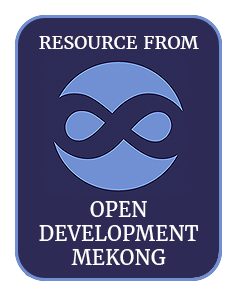2012 Global food policy report: Overview
This 2012 Global Food Policy Report is the second in an annual series that provides an in-depth look at major food policy developments and events. Initiated in response to resurgent interest in food security, the series offers a yearly overview of the food policy developments that have contributed to or hindered progress in food and nutrition security. It reviews what happened in food policy and why, examines key challenges and opportunities, shares new evidence and knowledge, and highlights emerging issues.
Agriculture and climate change: Direct and indirect mitigation through tree and soil management
Many opportunities exist for mitigating greenhouse gas (GHG) emissions through better management of trees and soils. There is potential for both direct mitigation through better management of carbon in agricultural landscapes and indirect mitigation through reduced pressure on carbon stored in forests, peatlands, and wetlands. Effectively harnessing these opportunities will take bold action in climate change negotiations.
Who suffers most from extreme weather events? Weather-related loss events in 2013 and 1994 to 2013
According to the Climate Risk Index, less developed countries are generally more affected than industrialised countries. The countries affected most in 2013 were the Philippines, Cambodia and India. For the period from 1994 to 2013 Honduras, Myanmar and Haiti rank highest. Regarding future climate change, the Climate Risk Index may serve as a red flag for already existing vulnerability that may further increase in regions where extreme events will become more frequent or more severe due to climate change.
USAID Mekong ARCC climate change impact and adaptation study for the Lower Mekong Basin, protected areas
This report provides an outline of protected areas and biodiversity in the Lower Mekong Basin. The analysis contains an overview of threats to protected areas from climate change, as well as non-climate threats such as land concessions, infrastructure development, illegal activities, and agriculture.
Community tenure rights and REDD+: a review of the Oddar Meanchey community forestry REDD+ project in Cambodia
Tenure rights over land, forest, and carbon have become a contentious issue within REDD+ implementation across the tropics because local communities could be excluded from REDD+ benefits if land tenure or use and access rights are not clear. This study aims to understand and assess tenure arrangements under the fi rst REDD+ demonstration project in Cambodia, the Oddar Meanchey Community Forestry REDD+ Project. In particular, the study explores the following questions: (1) How are tenure rights arranged in the Oddar Meanchey REDD+ Project?
Confronting Drought in Africa’s Drylands
Drylands make up about 43 percent of the region’s land surface, account for about 75 percent of the area used for agriculture, and are home to about 50 percent of the population, including many poor. Involving complex interactions among many factors, vulnerability in drylands is rising, jeopardizing the livelihood for of millions.
Untying the Land Knot : Making Equitable, Efficient, and Sustainable Use of Industrial and Commercial Land
A decade ago in Mozambique, a stakeholder workshop where the need to improve access to industrial and commercial land as a means to encourage investment was a topic of discussion, a government official came up to. In order to create new jobs, generate more income, and modernize the economy, many countries see an urgent need to encourage industrial and commercial investment, both domestic and foreign. However, investment in many sectors cannot take place unless land, along with other basic factors of production, is available.
Confronting the Food–Energy–Environment Trilemma
Economic, agronomic, and biophysical drivers affect global land use, so all three influences need to be considered in evaluating economically optimal allocations of the world’s land resources. A dynamic, forward-looking optimization framework applied over the course of the coming century shows that although some deforestation is optimal in the near term, in the absence of climate change regulation, the desirability of further deforestation is eliminated by mid-century.
The World Bank Group’s Partnership with the Global Environment Facility
The World Bank Group was a principal founding partner of the Global Environment Facility (GEF) in its pilot phase in 1991, and of the restructured GEF in 1994. The Bank plays three different roles in the GEF: (a) as trustee of the GEF and related trust funds, (b) as implementing agency, including the implementation of private-sector GEF projects by the International Finance Corporation (IFC), and (c) as the host organization of the functionally independent GEF secretariat.
Inclusion Matters : The Foundation for Shared Prosperity
Today, the world is at a conjuncture where issues of exclusion and inclusion are assuming new significance for both developed and developing countries. The imperative for social inclusion has blurred the distinction between these two stylized poles of development. Countries that used to be referred to as developed are grappling with issues of exclusion and inclusion perhaps more intensely today than they did a decade ago. And countries previously called developing are grappling with both old issues and new forms of exclusion thrown up by growth.
Turn Down the Heat : Climate Extremes, Regional Impacts, and the Case for Resilience
A Report for the World Bank by the Potsdam Institute for Climate Impact Research and Analytics.





